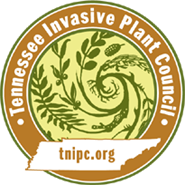Clematis terniflora DC.
Clematis terniflora DC.Sweet Autumn Clematis
| Threat Level | Category |
|---|---|
| Established | Vine |

Description
Sweet autumn virginsbower was introduced into the United States as an ornamental perennial vine and is still widely sold in the nursery trade. Sweet autumn virginsbower is a climbing, deciduous to semi-evergreen, perennial vine.Stem
a semi-evergreen climber or groundcover with semi-woody steps up to 4 inchesLeaves
Leaves are opposite, compound 3 leaflets; leaflets are 2-3 in. long and have entire (non-toothed) margins.Flowers
Flowers are produced late summer through fall; flowers are white with four petals.Fruit
Seeds are produced in profusion and are showy due to long, silvery-gray, feather-like hairs attached.Images
Photo: Chris Evans, River to River CWMA, Bugwood.orgMore images of Clematis terniflora
Life History
3. HabitatThis species is found invading forest edges, right-of-ways and urban areas along streams and roads. It grows vigorously over other vegetation, forming dense blankets that block sunlight to the plants underneath. In late summer infestations are conspicuous as a result of its abundant showy white flowers.
Origin and Distribution
Clematis terniflora is originally from Japan and China. Sweet autumn virginsbower is documented to occur in much of the eastern U.S. from Minnesota to Vermont, south to Texas and Florida. It has been reported to be invasive in Alabama, Delaware, Florida, Georgia, Illinois, Maryland, New Jersey, North Carolina, South Carolina, Tennessee and Virginia, although it is probably invasive in additional states where it occurs. It prefers full sun but can tolerate partial shade.h2. Management Recommendations
Mechanical Controls
Always wear gloves and long sleeves to protect your skin from poison ivy and barbed or spined plants that often grow amongst the invasive vines. For small infestations, plants can be hand-pulled along with the root portions. If fruits are present, the vines should be bagged in plastic trash bags and disposed of in a landfill or, alternatively, piled up and allowed to desiccate onsite. Dried piles of pulled material can either be left on-site and monitored the next year for new growth or hauled away. For climbing vines, first cut the vines near the ground at a comfortable height to kill upper portions and relieve host tree. Vines can be cut using pruning snips or a pruning saw for smaller stems and a hand axe or chain saw for larger stems. Try to minimize damage to the host tree’s bark. Rooted portions will remain alive and should be pulled, repeatedly cut to the ground or treated with herbicide. Cutting without herbicide will require vigilance and repeated cutting because new plants will resprout from the stem base.Grubbing. Grubbing is the removal of entire plants from the roots up and is appropriate for small initial populations or environmentally sensitive areas where herbicides cannot be used. Using a pulaski, weed wrench or similar digging tool, remove the entire plant, including all roots and runners. Juvenile plants can be hand pulled depending on soil conditions and root development. Any portions of the root system not removed may resprout.
Herbicidal Controls
Cut Stem Method. Use this method in areas where vines are established within or around non-target plants or where vines are growing on host trees. Cut vine stems close to the ground (about a foot above ground or at a convenient height) and immediately apply a 25% solution of glyphosate (e.g., Accord®) or triclopyr (e.g., Garlon® 4) mixed with water to the cut surface of the stem. Glyphosate and triclopyr applications are effective at temperatures as low as 45°F as long as the ground is not frozen. Subsequent foliar applications may be necessary to control new seedlings or sprouts. Homeowners can apply products like Brush-B-Gone®, Brush Killer® and Roundup Pro® concentrate undiluted to cut stems. Use a paint brush or a plastic spray bottle to apply the herbicide to cut surfaces.Biological Controls
Goats will eat C. terniflora but prefer it dried or dead.Bibliography
NPS Alien Plants Control"NPS Alien Plants":http://www.nps.gov/plants/alien/pubs/midatlantic/clte.htm
United States Department of Agriculture/Forest Service. Weed of the Week Publication. 15 January 2007. "Sweet Autumn Clematis":http://www.na.fs.fed.us/fhp/invasiveplants/weeds/sweet-autumn-virginsbower.pdf
